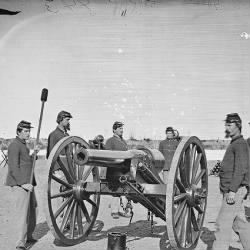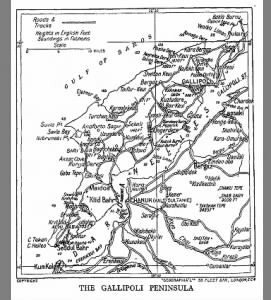

On June 4–7, 1942, American naval and air forces met the Japanese near Midway Atoll in one of the most decisive naval battles of the war. The Battle of Midway would become a turning point in the naval war in the Pacific, as the Japanese losses sustained there proved irreparable.
Following the Doolittle Raid on Tokyo in April 1942, the Japanese felt the need to force a decisive battle with the U.S Pacific Fleet that would leave America powerless in the Pacific and perhaps even lead America to accept peace on Japan’s terms. The Japanese developed a complex plan, to be carried out under the general direction of Admiral Isoroku Yamamoto, that involved attacking and occupying both the Aleutian Islands in Alaska and Midway Atoll, not far from Hawaii, in an attempt to lure the American fleet into a trap. However, American cryptanalysts were able to break enough of the Japanese code to be fairly certain of the basics of the Japanese plan.
American admiral Chester Nimitz, commander of the Pacific Fleet, sent two task forces to meet the Japanese at Midway: Task Force 16, with the carriers Hornet and Enterprise, under Rear Admiral Raymond Spruance; and Task Force 17, with the carrier Yorktown, under Rear Admiral Frank Jack Fletcher. The Japanese Midway force brought four carriers: the Soryu, Hiryu, Kaga, and Akagi.

The Japanese began carrier-based air attacks on the Midway Islands at dawn on June 4 in preparation for a land invasion. As the Japanese carriers were preparing to recover the planes from their Midway strike and launch others, various waves of Midway- and carrier-based American planes found the Japanese ships. Although the American planes in these initial attacks sustained great losses themselves, they did not do serious damage to the Japanese. However, they did prepare the way for subsequent American dive-bombers from the Enterprise and Yorktown to cause devastating damage to three of the Japanese carriers. Planes from the Enterprise destroyed the fourth Japanese carrier later that day as well, and all four carriers would eventually sink from the attack.
However, the Americans also sustained a carrier loss when—on the afternoon of the 4th—Japanese planes found the Yorktown and damaged her badly enough that the captain had the ship abandoned. A Japanese submarine finished off the Yorktown two days later and sunk it.
As a result of the various engagements between the Japanese and Americans from June 4th to 7th, the Japanese sustained heavy losses: 3,000 men and 4 carriers, while the Americans lost 300 men and 1 carrier. The Battle of Midway would prove a turning point in the naval fight in the Pacific, as it hobbled the Japanese carrier fleet and put Japan on the defensive at sea for the remainder of the war.
Did you have family who fought at Midway? Tell us about them! Or learn more about the battle on Fold3.












